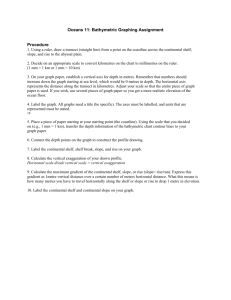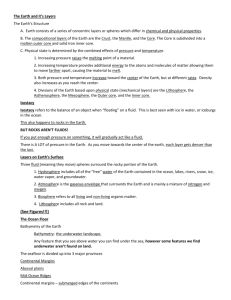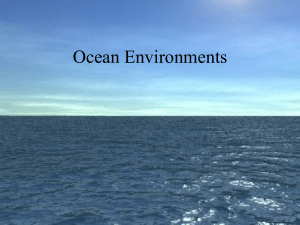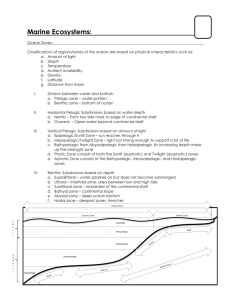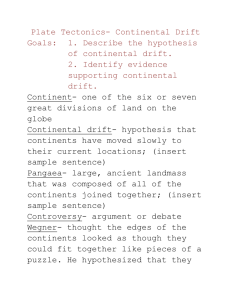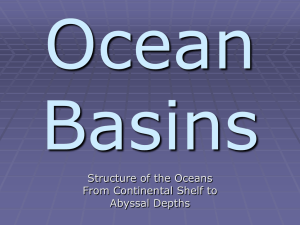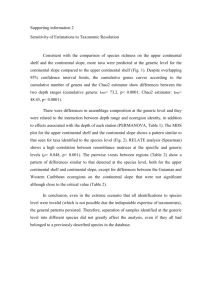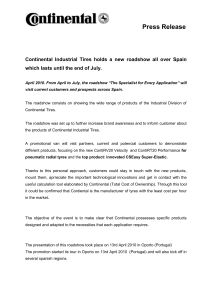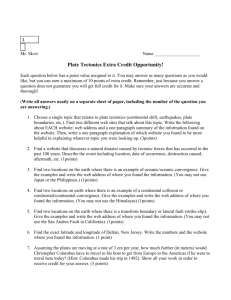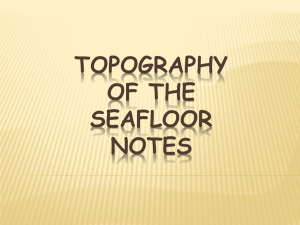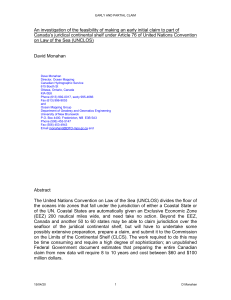Marine Ecosystems Definitions and Notes
advertisement
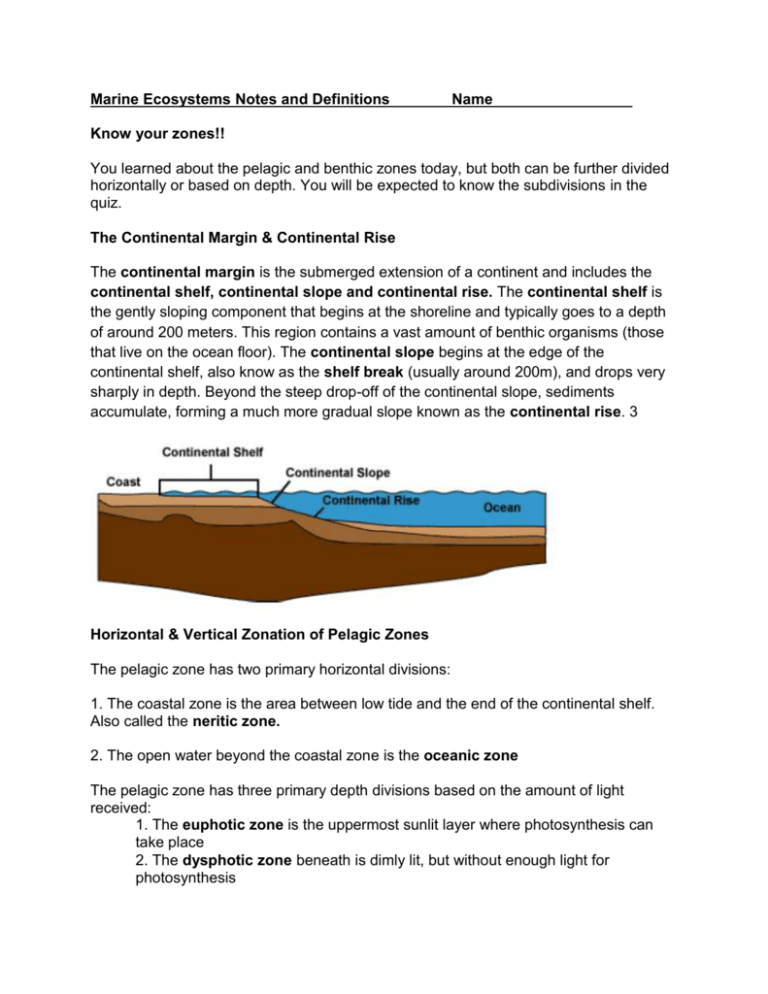
Marine Ecosystems Notes and Definitions Name Know your zones!! You learned about the pelagic and benthic zones today, but both can be further divided horizontally or based on depth. You will be expected to know the subdivisions in the quiz. The Continental Margin & Continental Rise The continental margin is the submerged extension of a continent and includes the continental shelf, continental slope and continental rise. The continental shelf is the gently sloping component that begins at the shoreline and typically goes to a depth of around 200 meters. This region contains a vast amount of benthic organisms (those that live on the ocean floor). The continental slope begins at the edge of the continental shelf, also know as the shelf break (usually around 200m), and drops very sharply in depth. Beyond the steep drop-off of the continental slope, sediments accumulate, forming a much more gradual slope known as the continental rise. 3 Horizontal & Vertical Zonation of Pelagic Zones The pelagic zone has two primary horizontal divisions: 1. The coastal zone is the area between low tide and the end of the continental shelf. Also called the neritic zone. 2. The open water beyond the coastal zone is the oceanic zone The pelagic zone has three primary depth divisions based on the amount of light received: 1. The euphotic zone is the uppermost sunlit layer where photosynthesis can take place 2. The dysphotic zone beneath is dimly lit, but without enough light for photosynthesis 3. The aphotic zone receives no light and is typically below 1,000m deep Other Vertical Pelagic Zones: The following pelagic zones are based on depth from the surface: Epipelagic (0-200m) Mesopelagic (200-1,000m) Bathyalpelagic (1,000-4000m) Abyssopelagic (4,000-6,000m) Hadalpelagic (6,000-10,000m) Benthic province/Benthic zones are broken down as follows: Shallow o Supralittoral – the area above the high tide line that gets splashed, but not submerged by water o Littoral – the intertidal zone that is sometimes submerged and sometimes above water o Sublittoral – the seafloor from the low tide line to edge of the continental shelf Deep o Bathyal – the seafloor along the continental slope toward the deep ocean bottom o Abyssal – the deep ocean bottom below the slope and above 6,000m o Hadal – the deepest zone, below 6,000m Know your ecosystem basics! You are expected to know some basic facts and terminology about ecosystems for Quiz questions. Below are some common terms to get you started. Abiotic: nonliving Biotic: living Community: populations of organisms living and interacting in the same ecosystem Ecosystem: a physically distinct area that contains a community of interacting organisms Niche: an organism’s role in its habitat Population: a group of interacting members of the same species Resources For more information on ecosystems, check out the links below: http://www.pbs.org/earthonedge/ecosystems/index.html http://library.thinkquest.org/11353/ecosystems.htm http://faculty.mccfl.edu/rizkf/OCE1001/OCEnotes/chap11.htm
